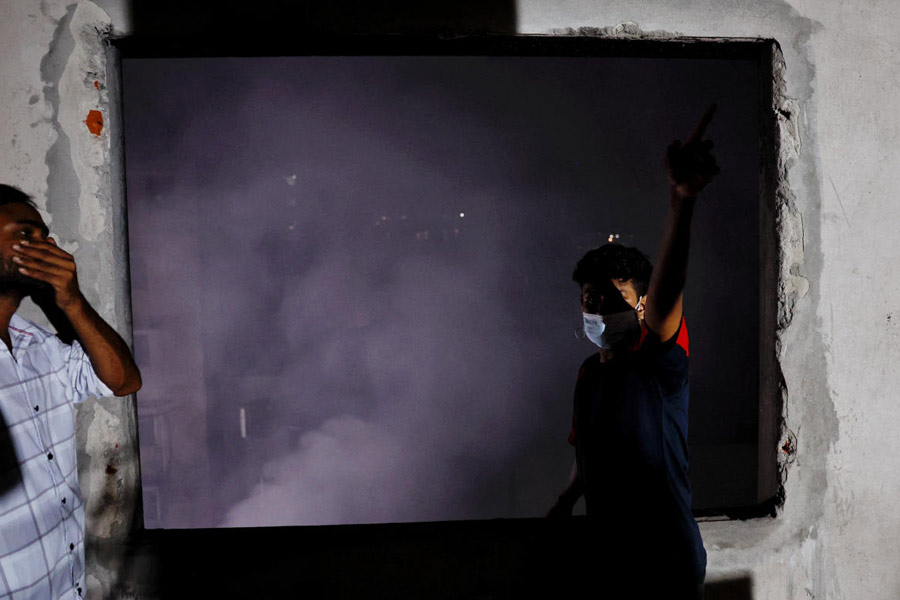The preparations come ahead of Trump’s April 2 “Liberation Day” tariffs that are expected to be announced at 4pm local time on Wednesday
India is adopting a wait-and-see approach to US President Donald Trump’s impending “reciprocal tariffs” announcement on Wednesday, choosing to evaluate the actual impact before formulating its response—a measured stance compared to the more reactive approaches of other major economies.
The preparations come ahead of Trump’s April 2 “Liberation Day” tariffs that are expected to be announced at 4pm local time on Wednesday (early Thursday in India ). The Republican leader on Monday said India will be among the countries that drop tariffs in response to his move.
Indian officials say they have mapped out four possible scenarios and their potential implications for Indian trade. In a product-specific scenario, Chinese, Mexican, Canadian and EU exports would likely be most affected, potentially making Indian exports more competitive. Sector-specific measures would impact all global players including India by increasing costs and reducing margins. And both country-specific and secondary tariff scenarios would adversely affect India’s economy, according to two people close to the development.
“In this atmosphere of uncertainty, where even Americans are guessing, we will wait for the announcements and evaluate their net impact on our trade and economy,” said a person close to the developments, who asked not to be named.
This stance stems from India’s focus on evaluating trade deals based on complementarity rather than just tariff levels. “In any bilateral trade deal, the net impact is evaluated on the basis of complementarity and not just on the basis of quantum of tariffs,” a second person said, citing India’s free trade agreement with the United Arab Emirates.
Under that FTA, India reduced import tariff for liquefied natural gas imports from UAE to zero because it (India) is energy deficient, “ hence no domestic competition on the product,” the second person added.
The most significant factor influencing India’s calm approach is the progress already made in bilateral negotiations. “So far, nothing adverse has happened. In fact, four-day negotiations for a proposed BTA (bilateral trade agreement) in New Delhi went well,” the second person noted.
“We are currently engaged as per the joint statement agreed by leaders of the two countries. When two partners are in talks nothing unexpected is expected.”
In Washington, where the administration released an encyclopaedic report on the tariffs and non-tariff barriers on Monday, covering most countries the US trades with, including India, US President Trump said India will be “dropping its tariffs very substantially”.
“I think a lot of (countries) will drop their tariffs because they’ve been unfairly tariffing the United States for years. If you look at the European Union on cars, the European Union already dropped their tariff to 2.5 per cent. It was announced a couple of days ago. A very small tariff. The United States charged very little,” Trump said while responding to questions in the Oval Office on Monday.
“I think I heard that India, just a little while ago, is going to be dropping its tariffs very substantially. I said, why didn’t somebody do this a long time ago. A lot of countries are going to be dropping their tariffs,” he added.
Reports, meanwhile, indicated White House aides have drafted plans for tariffs of about 20% on most of the $3 trillion of goods imported annually to the US. The Washington Post, which reported the number, quoted White House advisers as saying that no final decision has been made and that several options are on the table.
Trump’s administration is also weighing using the trillions of dollars it expects in new import revenue for a tax dividend or refund, the report said, citing three unnamed people familiar with the matter.
On Sunday. Trump said the reciprocal tariffs will target all nations, and the White House on Monday said any country that had treated Americans unfairly should expect to receive a tariff.
Representatives for the White House did not immediately respond to a request for comment on the reported proposal.
On February 13, Prime Minister Narendra Modi and President Donald Trump resolved to deepen US-India trade relations, aiming to boost total bilateral trade from about $200 billion to $500 billion by 2030—an ambitious initiative dubbed “Mission 500.” Unlike some other countries that have seen Trump abandon previous trade discussions, these negotiations appear to be proceeding constructively.
Minister of state for commerce Jitin Prasada confirmed in Parliament on Tuesday that “as on date, reciprocal tariffs have not been applied by US on India.” He added that both countries remain committed to negotiating a “mutually beneficial, multi-sector Bilateral Trade Agreement” focused on increasing market access, reducing barriers, enhancing supply chain integration and resolving bilateral trade issues.
Union commerce minister Piyush Goyal provided context for India’s broader trade philosophy in a statement tabled in the Lok Sabha on Tuesday: “India’s tariff policy aims to regulate trade, protect domestic industries, and generate revenue through taxes on imported and exported goods.” He noted that India is moving toward preferential and free trade agreements wherein tariffs and non-tariff barriers are reduced or eliminated on substantial trade between partner countries.
India’s approach stands in marked contrast to the European Union’s preparations for strong retaliatory measures. European Commission President Ursula von der Leyen declared on Tuesday that the EU has “a strong plan to retaliate and will use it” if necessary, with countermeasures on up to €26 billion of US goods reportedly being readied.
Similarly, while the UK scrambles to secure a last-minute economic arrangement with the US —with Prime Minister Keir Starmer acknowledging tariffs are likely despite “rapid progress” in negotiations—India appears content to let its existing dialogue with the US continue on the path set by the Modi-Trump joint statement in February.
India is also watching with interest the regional cooperation developing among Asian powers. China, Japan and South Korea held their first economic dialogue in five years on Sunday, reportedly discussing ways to strengthen supply chain cooperation.












